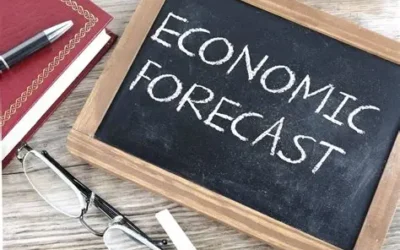
In light of the recent elections in the Netherlands and the measures of the new Dutch government, today’s article delves into udpates regarding measures to limit the migration on the Dutch teritorry.
The Dutch government, under the leadership of Geert Wilders’ nationalist and anti-Islam PVV (Party for Freedom), has outlined a series of stringent measures aimed at reducing migration. These steps are part of a broader strategy that could make the Netherlands one of the most restrictive countries in Europe for asylum seekers. The government’s plan involves declaring a national asylum crisis, which would enable them to implement significant changes to asylum policies without needing parliamentary approval, a move that has sparked legal and political debate.
Key Measures to Limit Migration
- National Asylum Crisis Declaration:
The government plans to invoke a national asylum crisis. By doing so, it aims to bypass normal legislative processes, granting itself emergency powers to enact new migration restrictions without parliamentary consent. These powers, based on crisis laws, would be similar to those used during the COVID-19 pandemic to respond swiftly without the delays of legislative debate. This move has raised concerns from opposition parties and legal experts, who question whether the current migration levels justify such a declaration. - Moratorium on New Asylum Applications:
One of the most immediate measures would be a temporary halt to all new asylum applications. The government is also considering introducing a law that could suspend decisions on pending applications for up to two years. These steps are intended to curb the number of migrants entering the Netherlands, especially at a time when the country’s only registration center is struggling to handle the existing flow of asylum seekers. - Revisions to Asylum Permits and Family Reunification:
The government plans to end the issuance of open-ended asylum permits, shifting towards more temporary or conditional permits. Additionally, it seeks to impose stricter conditions on family reunification, significantly limiting the ability of asylum seekers to bring immediate family members into the country. This measure would primarily affect those who have already been granted asylum and are seeking to reunite with spouses or children, thus making the country less attractive to migrants. - Enhanced Border Controls and Anti-Trafficking Measures:
Stricter border controls will be introduced to combat irregular migration and human trafficking. These efforts are part of a broader initiative to manage who enters the country and to prevent unauthorized crossings. Border checks, similar to those introduced recently by Germany, will be implemented to monitor and limit the flow of migrants across Dutch borders. - Royal Decree for Emergency Powers:
The government intends to use a royal decree to enact these emergency measures, a legal tool that allows rapid action during crises. This approach mirrors the method used during the pandemic, when similar emergency powers were invoked. However, the use of such measures in the context of migration control has been met with skepticism, with some experts arguing that the number of asylum seekers, which has remained relatively stable, does not justify invoking a state of emergency.
Migration in Context
The Netherlands received around 40,000 asylum seekers in 2023, roughly two first-time applications per 1,000 inhabitants—on par with the EU average. While this figure is not disproportionately high compared to other EU countries, the Netherlands has faced challenges due to years of budget cuts and insufficient infrastructure. The country’s main asylum registration center has struggled to accommodate the influx of migrants, at times leaving hundreds of refugees without shelter.
Prime Minister Dick Schoof, who leads the new government but has no political party affiliation, has justified these measures as necessary to address pressing issues in housing, healthcare, and education. The Dutch housing market is particularly strained, and there is growing public sentiment that limiting migration could alleviate some of these pressures. Nonetheless, these claims have been disputed, with critics pointing out that the overall number of asylum seekers is not exceptionally high compared to other European countries facing similar issues.
Political and Legal Controversy
The measures have sparked controversy both domestically and internationally. In the Netherlands, opposition parties have questioned the necessity and legality of declaring a national asylum crisis. Some legal experts argue that the current situation does not meet the criteria for such an emergency declaration, as the flow of asylum seekers remains within historical norms.
At the European level, the Dutch government’s plans may face resistance from the European Union. The EU has recently agreed on a common migration pact, which sets guidelines for how member states handle asylum seekers. Any attempt by the Netherlands to diverge from this framework could lead to legal challenges or political pushback from Brussels, as member states are expected to adhere to the collective agreements reached during negotiations.
The Wilders Agenda and Broader Implications
Geert Wilders‘ PVV party won the 2023 general election largely on a platform of imposing the strictest migration controls in the European Union. Although Wilders did not become prime minister, his policies are being enacted through the coalition government, which includes three other right-wing parties. The cabinet is led by Prime Minister Dick Schoof, a bureaucrat with no party affiliation, allowing Wilders to focus on policy without the burdens of the premiership.
The measures being implemented reflect Wilders’ long-standing political stance on migration, particularly his focus on reducing the number of asylum seekers and refugees entering the country. If successful, these policies could reshape the Netherlands’ approach to immigration and set a precedent for other European countries with nationalist or right-wing governments seeking to tighten their own migration rules.
The impact of these policies is likely to be far-reaching, affecting not only those seeking asylum in the Netherlands but also the country’s relationship with the European Union and its position within the broader EU migration framework. By taking such a hardline stance, the Dutch government is signaling a significant shift in its immigration policy, with potential repercussions for the country’s social, economic, and political landscape.
References
- (2024, September 13). Dutch government eyes emergency laws to curb migration. Retrieved from DW: https://amp.dw.com/en/dutch-government-eyes-emergency-laws-to-curb-migration/a-70214206
Meijer, B. H. (2024, September 13). Dutch aim for migration clampdown as government sees „asylum crisis“. Retrieved from Reuters: https://www.reuters.com/world/europe/dutch-aim-migration-clampdown-government-sees-asylum-crisis-2024-09-13/
Photo:
https://th.bing.com/th/id/OIP.I4tnuj_Dn3K7nGRqdxtD2QHaFU?rs=1&pid=ImgDetMain


